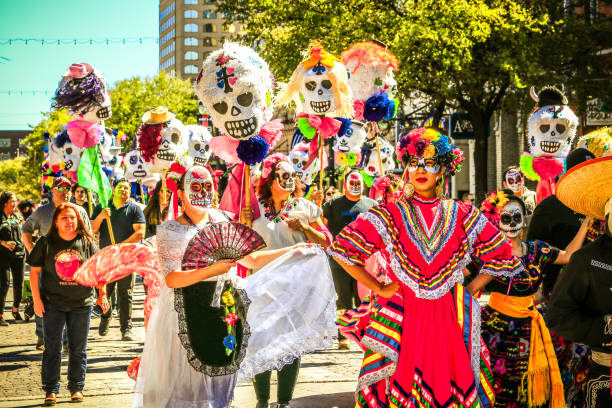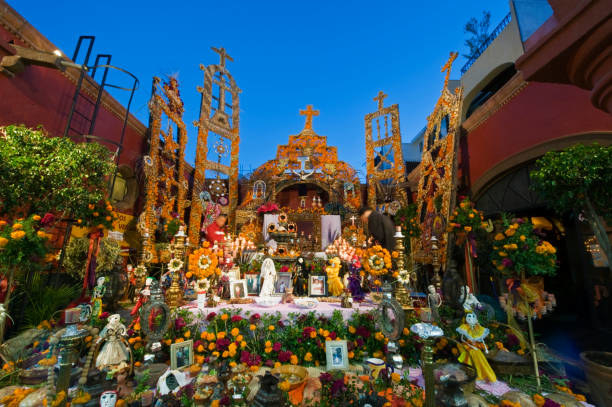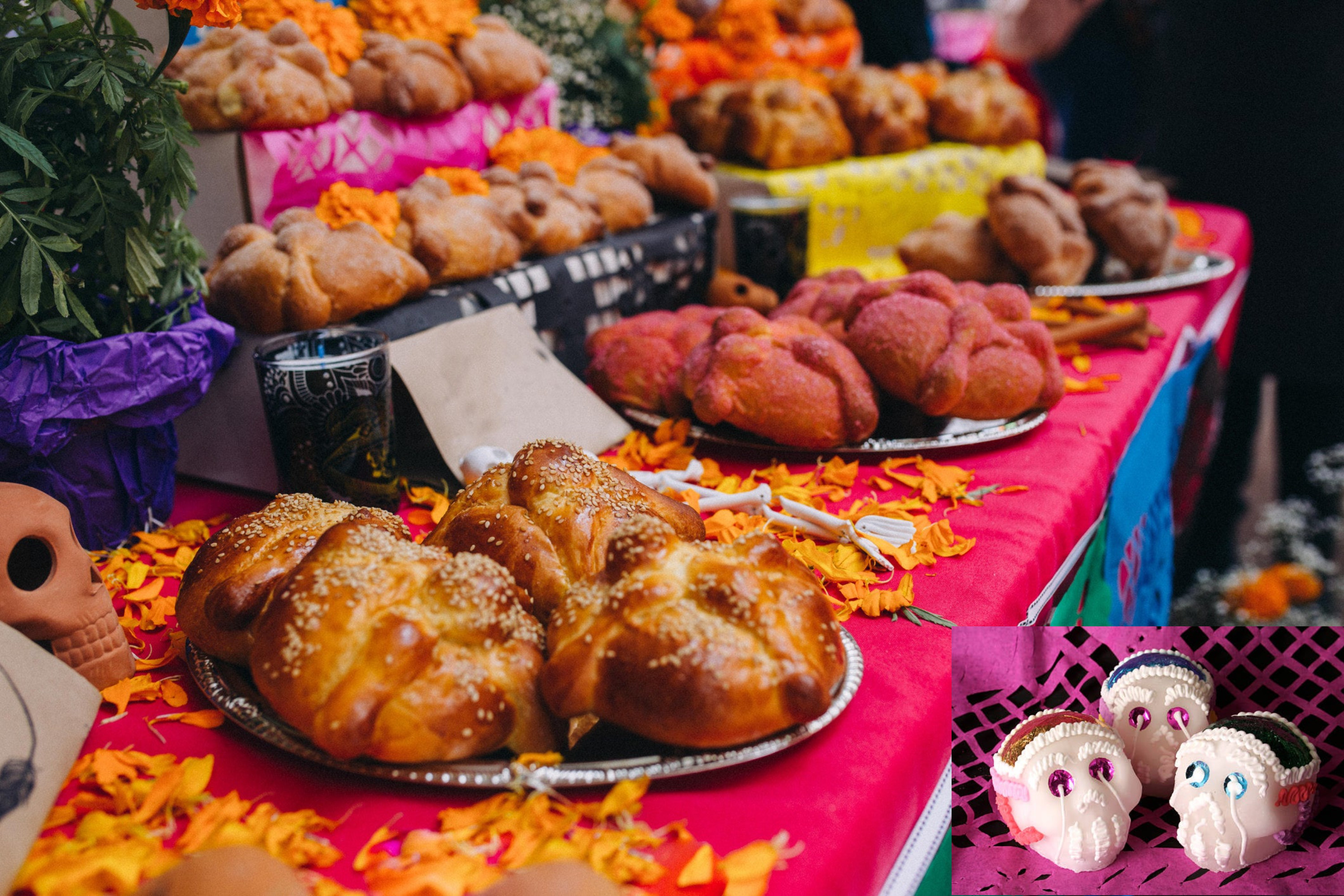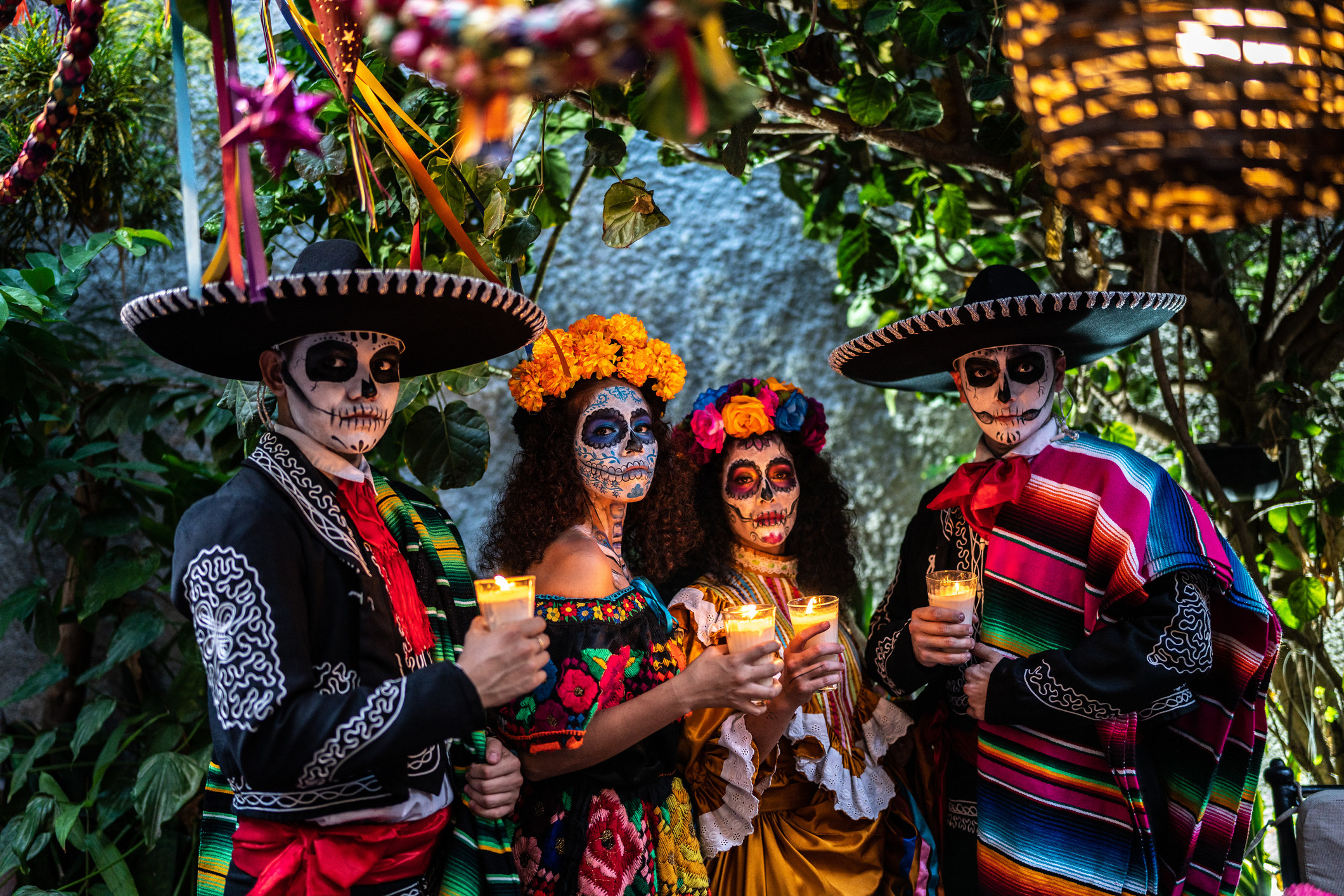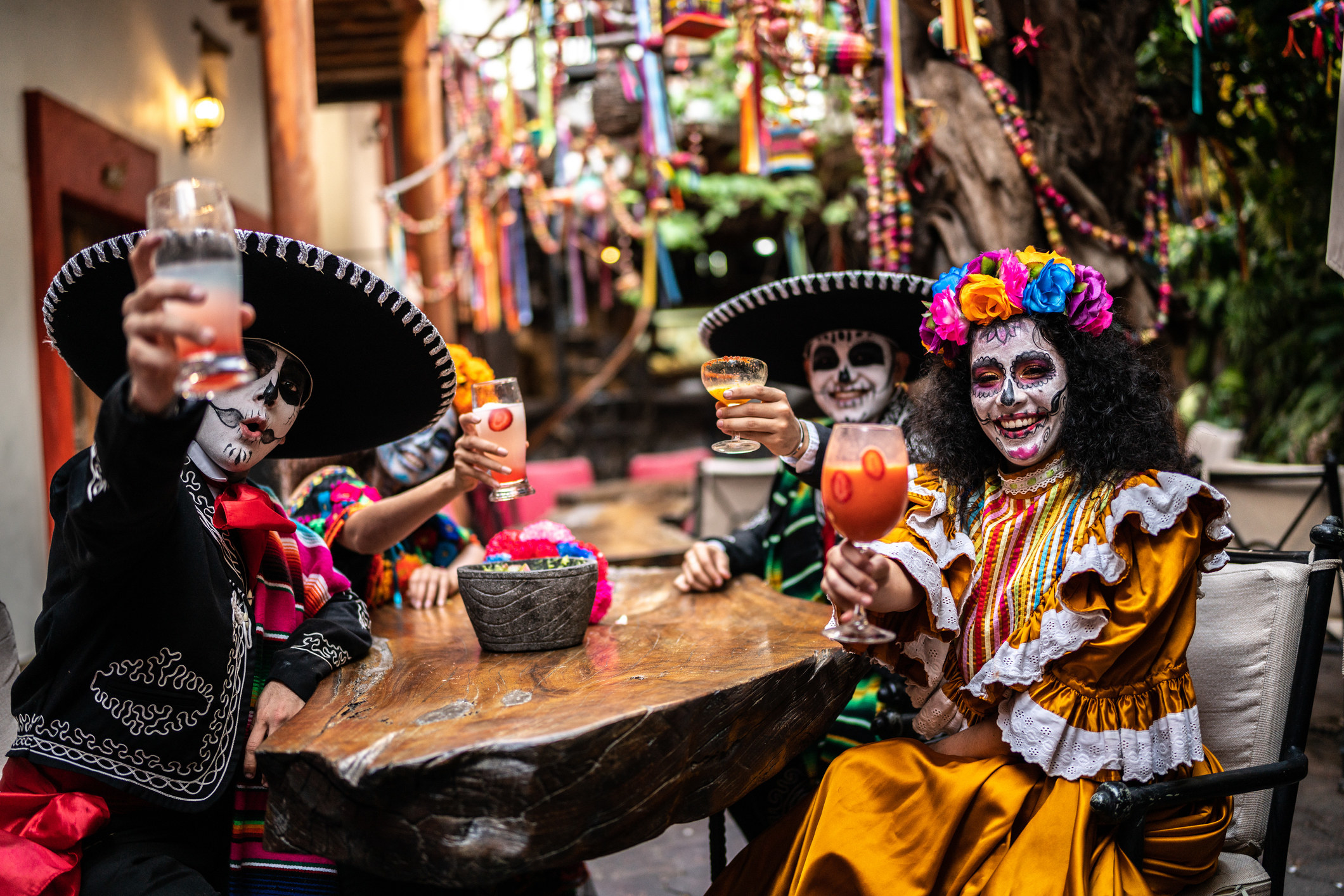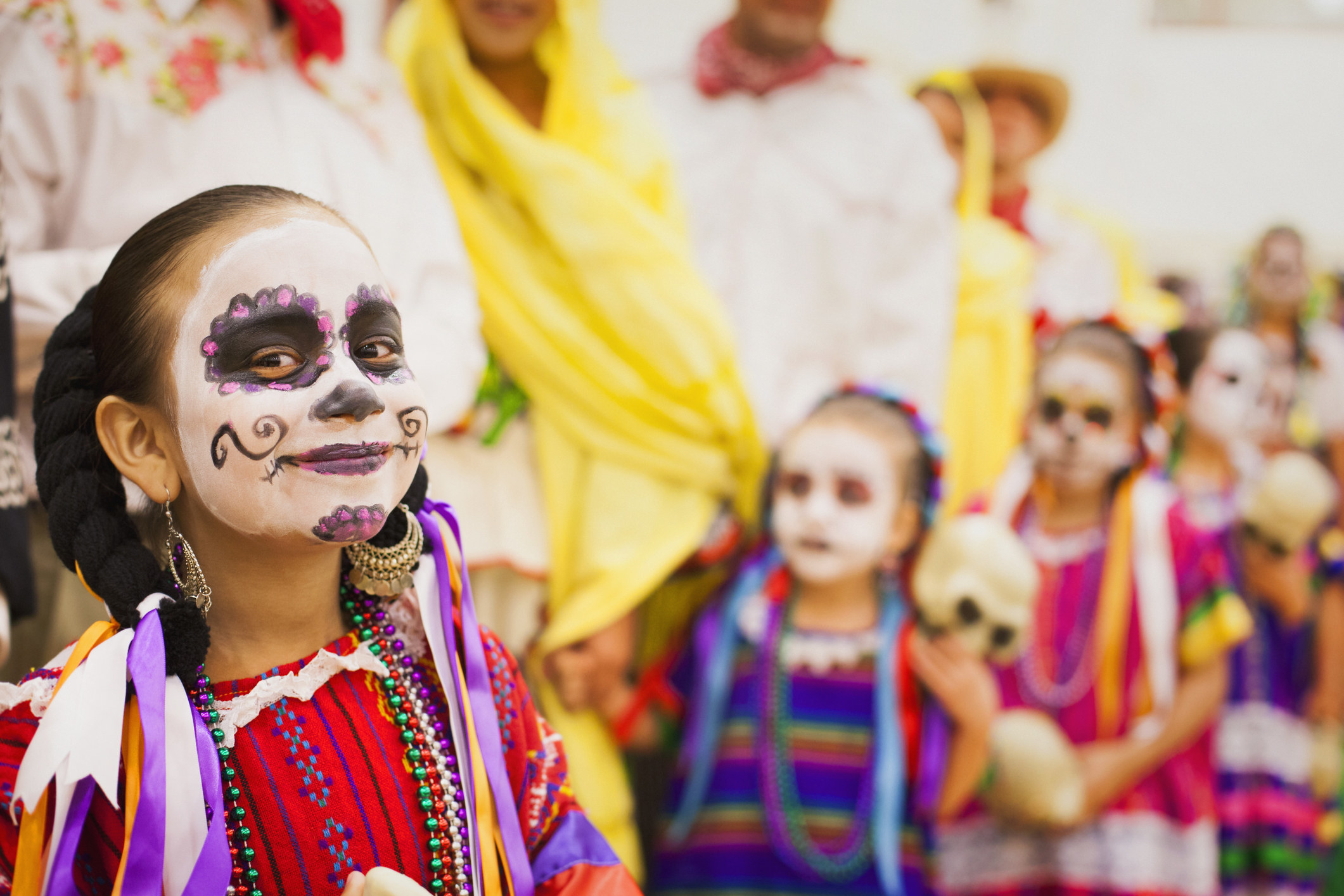People start prepping their altars three to four days before November 1st. This is because, according to tradition, our deceased loved ones come to visit us on different dates! November 1st is for little kids that have passed away, while November 2nd is the official day for everyone. Oh! Our pets come back too on October 27th. It’s completely normal to set up altars for them, with water and their favourite food, my dog will be in our family altar for the first time this year. Sure it’s sad because we miss our loved ones, but Día de Los Muertos is about celebrating their lives and keeping them alive in our memory. We tell stories and eat their favourite food (just not from their altar, that’s for them)! Sometimes there’s even live music, and there are huge colourful parades in Mexico City and other cities. Candles and marigolds lead the way for the dead. Ultimately, we believe that Día de Los Muertos is about the things you can’t see— like love, loss and our ancestors. The altar is just the physical representation of that. There are also sugar skulls but those are so intricate and hard that we don’t eat them at all, they are mainly for decorating altars. During Aztec times, the Goddess of Death, Mictecacihuatl, (meek-teh-KA-shee-wa-tl) represented this celebration. However, after colonization, things changed. So now she’s dressed in a big black dress with a huge hat that has marigold flowers around it. At least she got to keep her signature skull face decoration that we all love! This tradition comes from when kids in Aztec times didn’t have money to set up their altars so they painted their faces like the Goddess of Death and went door to door to get what they needed. So now in Mexico , there are three types of kids: The ones who don’t ask for calaverita but celebrate Halloween, the ones who only celebrate this holiday because they are traditional and lastly, the smart ones that get candy two days in a row.
